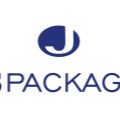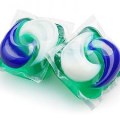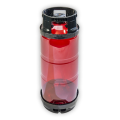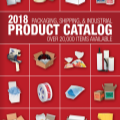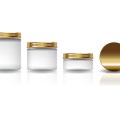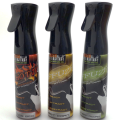If this is your company, CONTACT US to activate Packbase™ software to build your portal.


MJS Packaging, providing packaging solutions for all needs
When it comes to packaging and transporting hazardous materials, maximizing safety while minimizing risk is your top priority. In order to prepare your products for transport, we’ve dedicated time to creating an entire Hazardous Materials Packaging blog series outlining which products are considered hazardous materials, the proper packaging required, packaging options for specific industries, and regulations that you, the shipper, will need to know.
In this blog, we will discuss what qualifies a product as a hazardous material, specialized packaging, common hazardous products, and shipper responsibilities.
What qualifies a hazardous material?
Hazardous materials are materials or substances that carry the potential to cause injury or harm to people, property, or the environment when transported in commerce.
Any packaging used to transport hazardous material must be designed, constructed, maintained, properly filled, and closed to ensure the material is safely contained within the packaging during normal conditions of transport.
If your business transports hazardous materials in commerce, it must be done in accordance with the applicable Hazardous Materials Regulations (HMR) set by the U.S. Department of Transportation.
What packaging is required for hazardous materials?
MJS Packaging customers know they can count on us for a diverse and innovative selection of products. In this case, the hazardous nature of the products being shipped requires them to be transported with special packaging. As your packaging solutions provider, we want to familiarize you with the following four options.
Specification packaging: A packaging conforming to one of the specifications or standards for packagings in Part 178 or Part 179 of the 49CFR (Title 49 of the U.S. Code of Federal Regulations).
Single packaging: A packaging consisting of an outer packaging with no inner packaging.
Composite packaging: A packaging consisting of an outer packaging and an inner receptacle, with the two pieces forming an integral packaging. Once assembled, it remains an integrated single unit, and is filled, store shipped, and emptied as such.
Combination packaging: A combination of packaging for transport purposes, consisting of one or more inner packaging secured in a non-bulk outer packaging.
Note: combination packaging does not include a composite packaging.
A full line of stock packaging options are available to meet hazardous materials requirements, as well as custom packaging solutions that meet the requirements of the HMR. No matter your packaging needs, MJS Packaging has the solution.
Common oroducts requiring hazardous materials packaging
The U.S. Department of Transportation’s HMR standards include transporting hazmat materials by air, land, rail, or sea, all of which are governed by various organizations or associations. To avoid delays or even fines, it’s important to ensure that the products you ship are transported in the appropriate packaging.
Products that commonly use hazardous materials packaging include:
- Chemicals
- Paints & Coatings
- Batteries
- Explosives & Pyrotechnics
- Flavors & Fragrances
- Janitorial & Sanitation
- Insecticides & Pesticides
If you’re unsure if a product you’re shipping is hazardous, you can visit the Pipeline and Hazardous Materials Safety Administration website.
As your packaging solutions provider, we are always ready to assist with every question, as well.
Shipper responsibilities
The company or manufacturer who is offering hazmat products for commerce (referred to as the “shipper” by the HMR) needs to be very aware of their additional responsibilities, brought on by the type of product offered.
These responsibilities include:
- Identify, classify, and clearly describe the hazardous material.
- Determine whether packaging is authorized for the material.
- Close the packaging in conformance with the packaging manufacturer's instructions.
- Retain copies of supplied closing instructions.
- If packaging variations are used, justification must be documented and retained.
We’re here to help with the small details, as well as your larger packaging solutions.
Hazmat packaging questions?
At MJS Packaging, we truly pride ourselves on providing our clients world-class packaging solutions.
Should you have any questions, no matter how simple or how complicated, please reach out to us. You can Contact Us or call our specialists at 800-915-2262 for help finding the right packaging services for your products.
We’re here to make your company’s packaging needs a breeze




